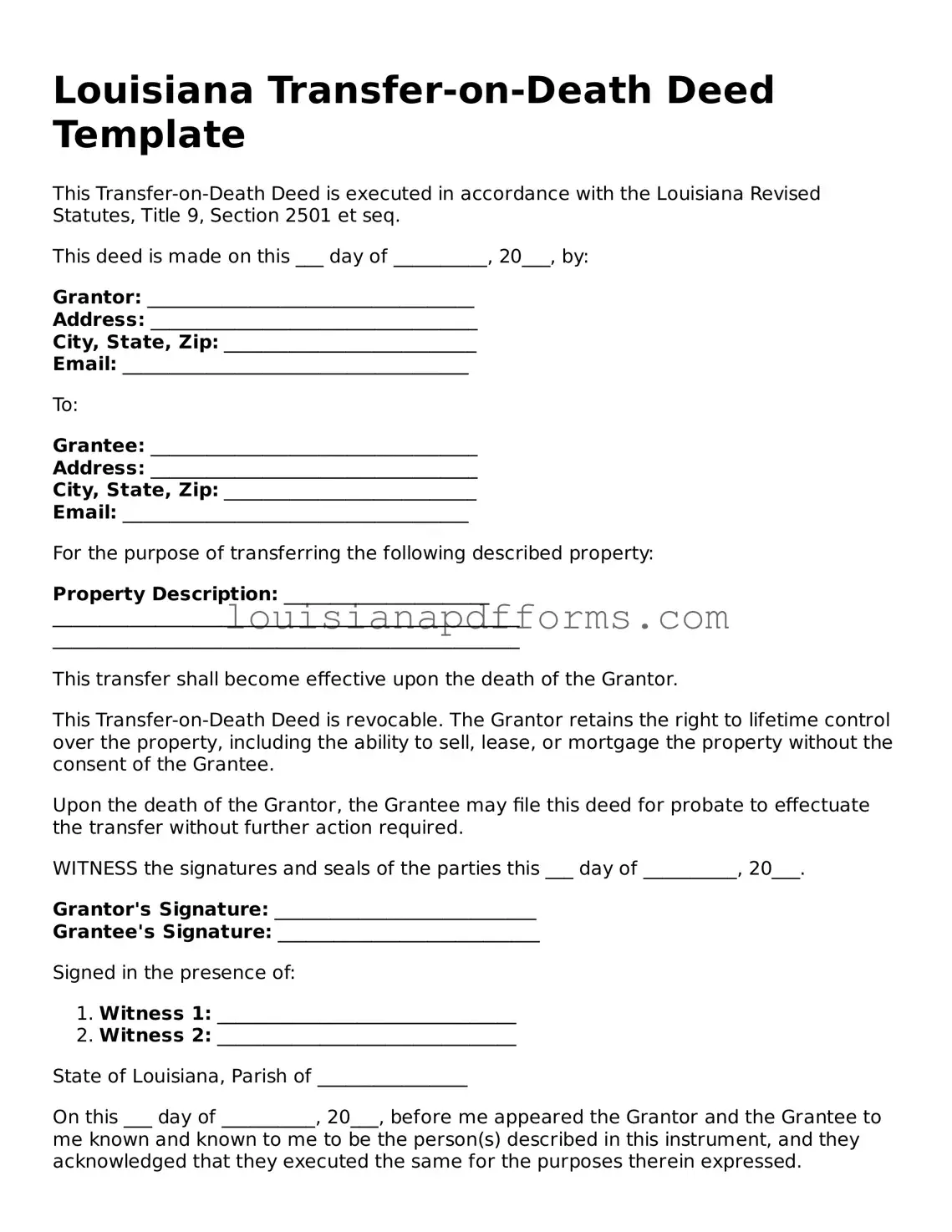Louisiana Transfer-on-Death Deed Template
This Transfer-on-Death Deed is executed in accordance with the Louisiana Revised Statutes, Title 9, Section 2501 et seq.
This deed is made on this ___ day of __________, 20___, by:
Grantor: ___________________________________
Address: ___________________________________
City, State, Zip: ___________________________
Email: _____________________________________
To:
Grantee: ___________________________________
Address: ___________________________________
City, State, Zip: ___________________________
Email: _____________________________________
For the purpose of transferring the following described property:
Property Description: ______________________
__________________________________________________
__________________________________________________
This transfer shall become effective upon the death of the Grantor.
This Transfer-on-Death Deed is revocable. The Grantor retains the right to lifetime control over the property, including the ability to sell, lease, or mortgage the property without the consent of the Grantee.
Upon the death of the Grantor, the Grantee may file this deed for probate to effectuate the transfer without further action required.
WITNESS the signatures and seals of the parties this ___ day of __________, 20___.
Grantor's Signature: ____________________________
Grantee's Signature: ____________________________
Signed in the presence of:
- Witness 1: ________________________________
- Witness 2: ________________________________
State of Louisiana, Parish of ________________
On this ___ day of __________, 20___, before me appeared the Grantor and the Grantee to me known and known to me to be the person(s) described in this instrument, and they acknowledged that they executed the same for the purposes therein expressed.
Notary Public: ____________________________
My Commission Expires: ____________________
